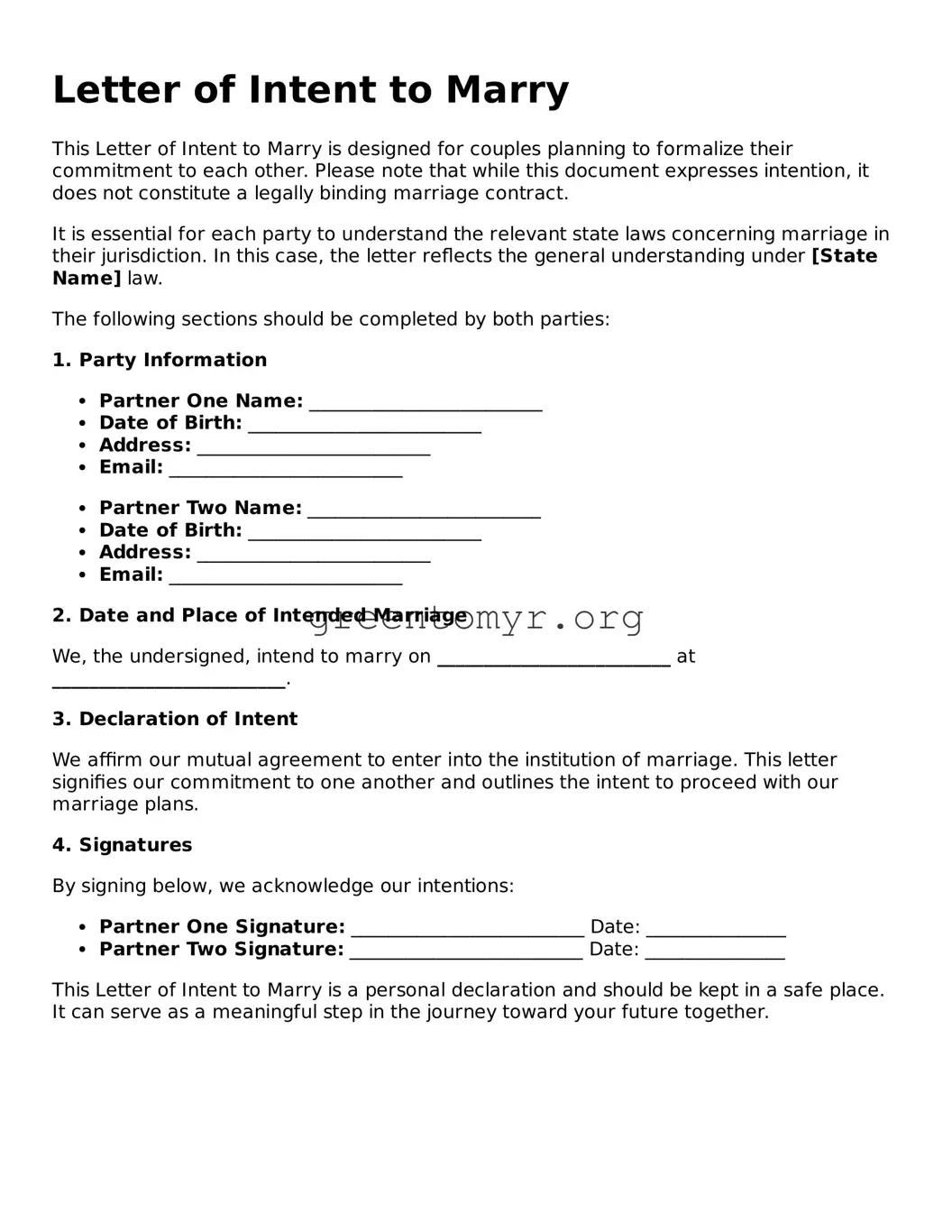Letter of Intent to Marry
This Letter of Intent to Marry is designed for couples planning to formalize their commitment to each other. Please note that while this document expresses intention, it does not constitute a legally binding marriage contract.
It is essential for each party to understand the relevant state laws concerning marriage in their jurisdiction. In this case, the letter reflects the general understanding under [State Name] law.
The following sections should be completed by both parties:
1. Party Information
- Partner One Name: _________________________
- Date of Birth: _________________________
- Address: _________________________
- Email: _________________________
- Partner Two Name: _________________________
- Date of Birth: _________________________
- Address: _________________________
- Email: _________________________
2. Date and Place of Intended Marriage
We, the undersigned, intend to marry on _________________________ at _________________________.
3. Declaration of Intent
We affirm our mutual agreement to enter into the institution of marriage. This letter signifies our commitment to one another and outlines the intent to proceed with our marriage plans.
4. Signatures
By signing below, we acknowledge our intentions:
- Partner One Signature: _________________________ Date: _______________
- Partner Two Signature: _________________________ Date: _______________
This Letter of Intent to Marry is a personal declaration and should be kept in a safe place. It can serve as a meaningful step in the journey toward your future together.
